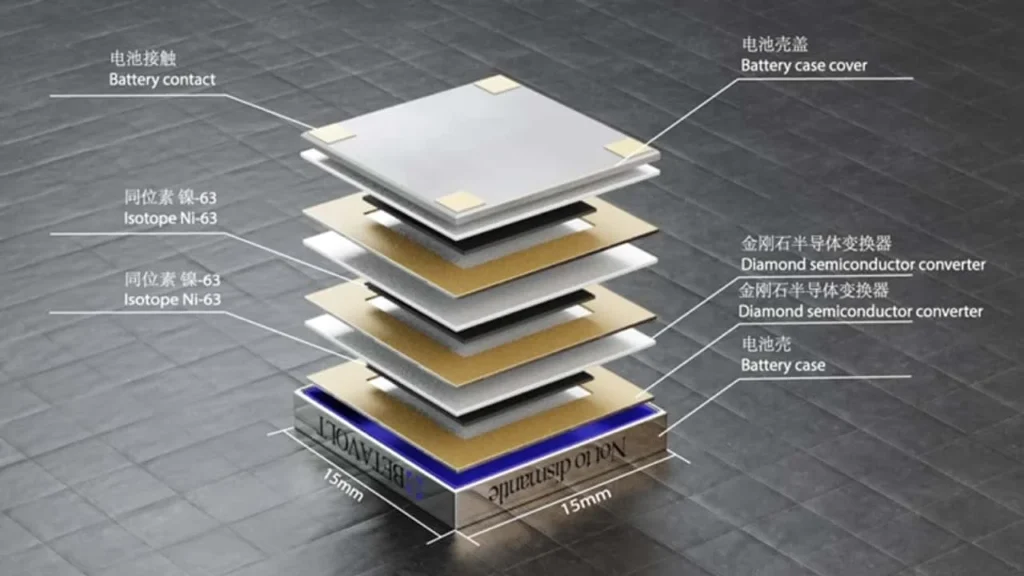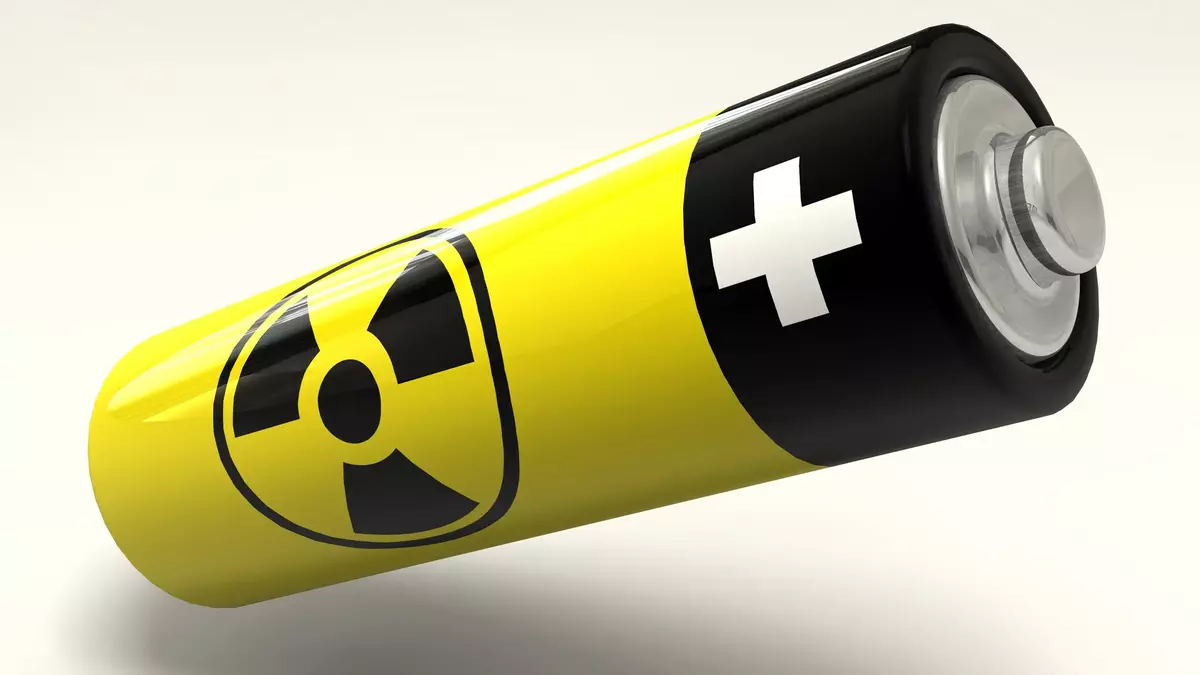The incredible lifespan of nuclear battery, reaching up to 50 years without needing a recharge, lies in the unique way they harness energy compared to traditional batteries. Here’s a breakdown of the two main types and their mechanisms:
1. Radioisotope Thermoelectric Generators (RTGs):
- Fuel: They use the natural radioactive decay of materials like plutonium-238. As this isotope decays, it emits heat.
- Conversion: This heat is not electricity directly, but rather thermal energy. RTGs use thermoelectric materials that convert this heat difference into electricity through the Seebeck effect. Imagine having two different metals joined at their ends, with one side hotter than the other. This temperature difference creates a voltage, and in RTGs, the heat from decay acts as the hot side.
- Longevity: The key to their 50-year lifespan lies in the slow, steady decay of the radioactive material. Plutonium-238 has a half-life of 88 years, meaning it takes that long for half of its atoms to decay. This gradual process ensures a continuous heat source and, consequently, continuous electricity generation for decades.
2. Betavoltaic Batteries:

- Fuel: Instead of heat, they utilize the electrons emitted directly from the decay of isotopes like tritium.
- Conversion: These energetic electrons are captured by specially designed materials, directly generating electricity through the photoelectric effect. Think of it like a miniature solar panel constantly bombarded by tiny particles, converting their energy into electricity.
- Longevity: While impressive, their lifespan typically falls shorter than RTGs, ranging from 10 to 20 years. This is because tritium has a shorter half-life (12.3 years), meaning the electron emission rate gradually declines over time.
Additional Factors about Nuclear battery:
- Efficiency: Both RTGs and betavoltaic batteries are relatively inefficient in terms of energy conversion. However, their long lifespans and suitability for specialized applications outweigh this limitation.
- Safety: Both types require robust safety measures due to the radioactive materials involved. Strict regulations and responsible disposal methods are crucial.
Nuclear batteries offer a unique solution for applications where traditional batteries fall short. While they present challenges in cost, power output, and safety, their potential for powering remote devices, long-term missions, and even medical implants makes them a promising technology for the future.
Remember: 50 years is an estimate, and the actual lifespan may vary depending on factors like the specific isotope used, operating conditions, and degradation of materials. However, the core principle of using radioactive decay for long-lasting power generation remains remarkable.
FAQ
How exactly do nuclear battery work without needing a recharge?
Top 5 FAQs about Nuclear Batteries:
1. How exactly do nuclear batteries work without needing a recharge?
Nuclear battery don’t actually “recharge” in the traditional sense. Instead, they utilize the natural and continuous process of radioactive decay to generate electricity. This decay releases energy in two main forms:
Radioisotope Thermoelectric Generators (RTGs): Capture the heat from decay and convert it to electricity through the thermoelectric effect.
Betavoltaic Batteries: Harness the electrons directly emitted during decay, converting their energy into electricity through the photoelectric effect.
Where are nuclear batteries currently used?
Nuclear batteries are currently used in niche applications where traditional batteries fall short due to their longevity and ability to function in harsh environments. Examples include:
Space exploration: Powering spacecraft venturing beyond solar reach, like Voyager 1 and Cassini.
Medical devices: Potential for powering pacemakers and other implantable devices, eliminating frequent replacements.
Remote sensors: Monitoring environmental conditions, weather, or wildlife in remote areas.
Military applications: Portable power for equipment, communication systems, or unmanned vehicles in harsh environments.
Disaster relief: Providing emergency power for critical equipment like medical facilities or communication systems after natural disasters.
Are nuclear batteries safe?
Nuclear battery contain radioactive materials, raising safety concerns. However, strict regulations and safety measures are in place to minimize risks.
Additionally, the amount of radioactive material used is small, and robust containment systems ensure minimal leakage. Responsible disposal of used batteries is also crucial.
What are the limitations of nuclear batteries?
Despite their advantages, nuclear battery face some limitations:
Cost: The complexity and safety measures involved make them expensive. Research focuses on reducing costs and finding alternative isotopes.
Power output: RTGs offer long life but limited power, while betavoltaic batteries have even lower power, suitable for specific applications.
Waste management: While small, the radioactive material needs responsible disposal, requiring specialized facilities and regulations.
What’s the future of nuclear battery?
Research and development are actively addressing the limitations of nuclear batteries. Potential advancements include:
Cost reduction through new materials and production methods.
Increased power output for wider applications.
Improved safety measures and more efficient waste management.




